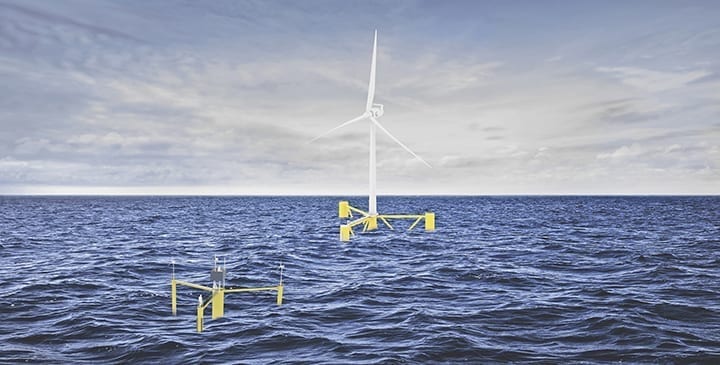Chevron Joins Growing List of Oil and Gas Companies Investing in Offshore Wind
Ocergy Inc., a company developing a couple of new offshore wind energy solutions, announced last week that Chevron Technology Ventures and Moreld Ocean Wind (MOW) were investing in its Series A round of funding. The money is expected to help the company commercialize its OCG-Wind Floating Offshore Wind Turbine technology and OCG-Data environmental monitoring buoy.
Bloomberg reported that this is Chevron’s first investment in offshore wind, and it is believed to be the first investment in offshore wind made by any U.S. oil and gas (O&G) major. However, several European O&G companies have been pouring money into the renewable energy sector including offshore wind. Among the big names adding renewables to their portfolios are Total, BP, Royal Dutch Shell, Equinor, Eni, and Repsol.
“This is a very Eurocentric story right now,” David Linden, head of Energy Transition with Westwood Global Energy Group, told POWER during an interview in late February. Westwood Global Energy Group is a UK-based energy market research and intelligence firm that provides subscription-based data services, bespoke reporting, and commercial advice to clients around the world. “You’ve got clear themes that European-based businesses are thinking about decarbonization and diversification, while Asian and American oil and gas companies are less focused on that,” Linden said.
The Bloomberg article says, “Chevron’s deal with Ocergy doesn’t mark a strategic pivot to renewable energy, but part of a” $300 million plan [Ed. update 4/22/21 at 5:15 p.m. EDT: The Bloomberg article incorrectly reported the investment was part of a “$300 million-a-year plan,” but a Chevron spokesperson informed POWER that the total is part of a “pot” of money rather than an annual allotment.] “to invest in early-stage technologies that may play a future role in the energy transition. The company is unwilling to erode returns by investing aggressively in unfamiliar business where it doesn’t have a competitive advantage and sees oil and gas as its core products for year to come.”
Chevron Technology Ventures says it has a 22-year history of investing in startups across a wide cross section of energy innovation and a track record of collaboration to bring innovation to scale. The Ocergy investment is made from CTV’s Future Energy Fund, which identifies technology solutions needed for the energy transition, including industrial decarbonization, emerging mobility, and energy decentralization.
“Offshore wind power is undergoing a period of rapid innovation in an effort to provide lower carbon energy at a substantial scale,” Barbara Burger, vice president of Innovation and president of Technology Ventures at Chevron, said in a statement. “Ocergy has developed technology that could be part of the solution to enable more affordable, reliable, and ever-cleaner energy in a marine environment.”
“We are excited to have gained Chevron’s investment and look forward to potential opportunities for their guidance and expertise executing some of the most complex offshore projects in the world,” said Ocergy CEO Dominique Roddier.
Ocergy’s OCG-Wind solutions is said to be “a low-cost foundation supporting the new generation of very large offshore wind turbines.” The hull allows the platform to have a very light weight (Figure 1), according to the company, and it’s supposedly tailored for “ease of industrialization.”

The company’s OCG-Data product is a “multi-disciplinary ocean observer for complete offshore site assessment. It has enough footprint to host and power multiple instrumentation packages for resource and environmental characterization. Underwater biodiversity monitoring relies on the combination of restoration technologies and passive acoustic monitoring arrays. The buoy also hosts a bird and bat detection and identification system. OCG-Data provides high-quality data including ecological information for stakeholders’ engagement,” Ocergy said.
Moreld’s investment in Ocergy was accompanied by an announcement that it had formed the new company called MOW, which will focus on delivery of engineering, procurement, construction, and installation (EPCI) contracts in the floating offshore wind industry. Moreld said it is “already a well-established player in the Offshore Floating Wind space, with leading competencies within FEED, marine services and product solutions.” Ocergy suggested the collaboration with MOW positions the company to compete aggressively for gigawatt-scale commercial floating offshore wind projects.
—Aaron Larson is POWER’s executive editor (@AaronL_Power, @POWERmagazine).